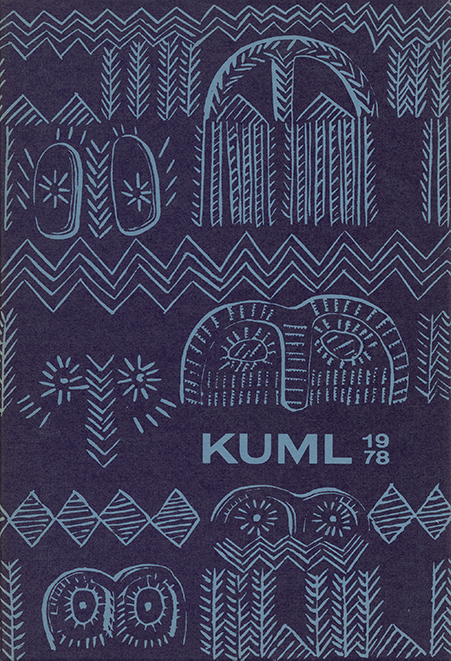Paleomagnetic dating of a kiln from Rye Sønderskov
DOI:
https://doi.org/10.7146/kuml.v27i27.106898Keywords:
kiln, paleomagnetic dating, rye sønderskov, limekilnAbstract
Palaeomagnetic dating of a kiln from Rye Sønderskov
In Rye Sønderskov 11 km SE of Silkeborg in eastern Jutland, the remnants of 4-5 kilns are known, their ages and usage being unknown. However, numerous whiteburnt flint fragments and a few late mediaeval sherds suggest that they are limekilns from the 15th century (Chr. Fischer, personal communication).
In 1977 15 orientated specimens of brownish partially reduced clay were collected from the apparently undisturbed base of the northernmost kiln. Magnetic measurements were made on a spinner magnetometer, and the results are summarized in table 1, together with the Fisher statistics on a sphere (1). The directional scatter of the natural remanent magnetization (fig. 1) is rather small, and the inclination does not change significantly during a.f. demagnetization; the main carrier of the remanent magnetization is magnetite, the median destructive field being 200-500 0e (fig. 2).
When comparing the well defined mean direction of the NRM: Dm, Im = 12.8°, 66.6° (α95 = 3.4°, k = 122, N = 15) with the master curve of the secular variation in Denmark after 1000 A. D. (fig. 3), we obtain an apparent magnetic age of between 1450 and 1530 A.D. The Danish master curve is based on a dipole reduction of the British archaeomagnetic data (1); an additional error of at least ±1° in the inclination, equivalating an error in the dating interval of about ±25 y, is therefore likely to be present.
Niels Abrahamsen
Downloads
Published
How to Cite
Issue
Section
License
Fra og med årgang 2022 er artikler udgivet i Kuml med en licens fra Creative Commons (CC BY-NC-SA 4.0).
Alle tidligere årgange af tidsskriftet er ikke udgivet med en licens fra Creative Commons.


